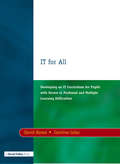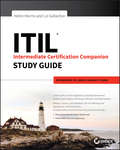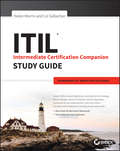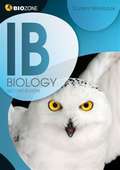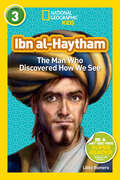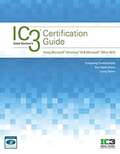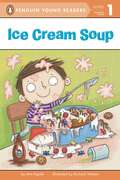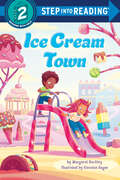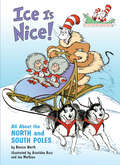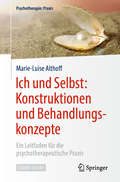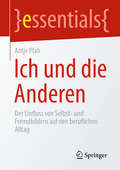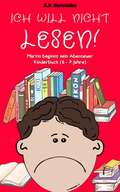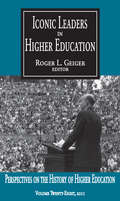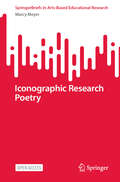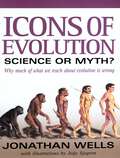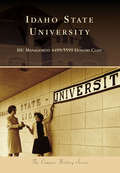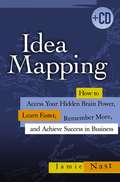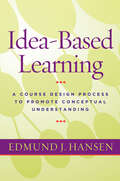- Table View
- List View
ISO/IEC 20000 An introduction to the global standard for service management
by David CliffordManage your IT services more effectively This pocket guide will show you how. Whatever your business, your capacity to supply products and services to your customers depends on your IT. Yet, all too often, companies and government departments fail to take effective control of their IT systems. Instead, organisations rely on a confused mish-mash of different technologies and ad hoc working practices. The solution: an ITSMS To avoid this fate, your organisation needs to adopt an IT Service Management System (ITSMS). Employing an ITSMS will enable your organisation to identify how to enhance the quality of service you deliver to your customers. The standard for an ITSMS is ISO/IEC 20000. ISO/IEC 20000 The standard This pocket guide offers an overview of the purpose of the standard and shows how it can be used. Topics covered include qualification programmes, certification schemes and the interrelationship of ISO20000 with other standards, such as ISO27001. The overall emphasis of the guide is on ISO20K s customer-driven approach, ensuring your IT service management processes will be aligned with the needs of your business. Benefits to business include: * Deliver on the commitments you have made. When you provide services to a customer, the customer expects you to take responsibility for completing the job on time. From your perspective, the way you deal with your suppliers plays a vital role in fulfilling that objective. Implementing ISO20000 entails adopting a holistic approach to service development and delivery, enabling prompt and accurate communication between your organisation and your suppliers. By managing relationships with your suppliers, you can establish a strong supply chain that will be capable of delivering on the commitments you have made. * More efficient and effective service delivery. Different divisions and departments are a fact of life in every organisation. The problem is how to get them working together. Without proper communication between your employees, you cannot get them to cooperate. By adopting ISO20000, employee coordination can be improved and you can protect your organisation from the risk of different business units turning into information silos. Measures, such as showing appreciation for actions that promote integration, and using key performance indicators that encourage measurement across the departmental divide, will foster team spirit and lead to more efficient and effective service delivery. * Strengthen relationships and win new business. You can improve the running of your business simply by using ISO20000 as a checklist of activities that need to be performed. However, there are many advantages to achieving formal certification. In particular, it will help you to strengthen your relationships with existing customers and to win new business. If you are a service provider, certification to ISO20000 is an opportunity to demonstrate the quality and reliability of your service management capability to existing and potential customers. * Win new contracts. For a service provider, certification to ISO20000 can open doors and help you bid for new orders. Sometimes, a customer organisation may make certification to ISO20000 a requirement when awarding a particular contract. When businesses devote too little time to researching or planning how they deal with customers, the quality of service they provide will inevitably suffer, as they find themselves reacting to problems rather than devising a solution to them. In the long run, the silo-based mentality leads to a decline in the quality of service the organisation can provide, undermining relationships with customers and making it harder to forge new partnerships or win new business. This pocket guide contains invaluable advice on how to define the appropriate scope for assessment against ISO20000 and how the service management activities are audited using test data. It will enable you to ensure your IT service management processes align with the needs of your business and ultimately grow your business by...
IT Through Experiential Learning
by Shreekant W ShiralkarThis concise book shows you how experiential learning can be used to overcome the challenges posed in applying and delivering information technology (IT) to your business needs through an innovative, game-based approach. Technology innovations and evolving business models are part of a rapid change that is forcing corporate and management professionals to learn, deploy, and adopt IT in new ways in order to maintain a competitive advantage. Many are doing this through experiential learning. You'll begin by reviewing the basics of experiential learning and its relevance to IT, followed by six chapters that apply the hands-on concept through various scenarios. Make IT Through Experiential Learning one of your valued resources today. What You'll Learn: Innovative and proven IT-related application scenarios Generic management and leadership skill development Guidance for applying the learning methods for generating extraordinary results over conventional methods Who This Book Is For: IT professionals, higher education students, and those engaged in training and organizational development.
IT for All (Entitlement For All Ser.)
by Caroline Coles David Banes Carole Thornett Peter GossageFirst Published in 1995. Routledge is an imprint of Taylor & Francis, an informa company.
ITIL Foundation Exam Study Guide
by Helen Morris Liz GallacherEverything you need to prepare for the ITIL exam - Accredited to 2011 syllabusThe ITIL (Information Technology Infrastructure Library) exam is the ultimate certification for IT service management. This essential resource is a complete guide to preparing for the ITIL Foundation exam and includes everything you need for success. Organized around the ITIL Foundation (2011) syllabus, the study guide addresses the ITIL Service Lifecycles, the ITIL processes, roles, and functions, and also thoroughly explains how the Service Lifecycle provides effective and efficient IT services.Offers an introduction to IT service management and ITIL V3 service strategyHighlights the topics of service design and development and the service management processesReviews the building, testing, authorizing, documenting, and implementation of new and changed services into operationAddresses creating and maintaining value for customers through monitoring and improving services, processes, and technologyDownload valuable study tools including practice exams, flashcards, a glossary of key terms and more.If you prefer self-study over the more expensive training course, but you don't want to skimp on information or preparation, then this study guide is for you.
ITIL Intermediate Certification Companion Study Guide: Intermediate ITIL Service Capability Exams
by Helen Morris Liz GallacherThe expert-led, full-coverage supporting guide for all four ITIL exams ITIL Intermediate Certification Companion Study Guide is your ultimate support system for the Intermediate ITIL Service Capability exams. Written by Service Management and ITIL framework experts, this book gives you everything you need to pass, including full coverage of all objectives for all four exams. Clear, concise explanations walk you through the process areas, concepts, and terms you need to know, and real-life examples show you how they are applied by professionals in the field every day. Although this guide is designed for exam preparation, it doesn't stop there — you also get expert insight on major topics in the field. The discussion includes operational support and analysis; planning, protection and optimization; release, control and validation; and service offerings and agreements that you'll need to know for the job. ITIL is the most widely-adopted IT Service Management qualification in the world, providing a practical, no-nonsense framework for identifying, planning, delivering, and supporting IT services to businesses. This book is your ideal companion for exam preparation, with comprehensive coverage and detailed information. Learn service strategy principles, organization, and implementation Master the central technologies used in IT Service Management Be aware of inherent challenges, risks, and critical success factors Internalize the material covered on all four ITIL exams The ITIL qualification is recognized around the globe, and is seen as the de facto certification for those seeking IT Service Management positions. Passing these exams requires thorough preparation and rigorous self-study, but the reward is a qualification that can follow you anywhere. ITIL Intermediate Certification Companion Study Guide for the ITIL Service Capability Exams leads you from Foundation to Master, giving you everything you need for exam success.
ITIL Intermediate Certification Companion Study Guide: Intermediate ITIL Service Lifecycle Exams
by Helen Morris Liz GallacherComplete, detailed preparation for the Intermediate ITIL Service Lifecycle examsITIL Intermediate Certification Companion Study Guide is the ultimate supporting guide to the ITIL Service Lifecycle syllabus, with full coverage of all Intermediate ITIL Service Lifecycle exam objectives for Service Operation, Service Design, Service Transition, Continual Service Improvement, and Service Strategy. Using clear and concise language, this useful companion guides you through each Lifecycle module and each of the process areas, helping you understand the concepts that underlie each skill required for certification. Illustrative examples demonstrate how these skills are applied in real-life scenarios, helping you realize the importance of what you're learning each step of the way. Additional coverage includes service strategy principles and processes, governance, organization, implementation, and technology considerations, plus guidance toward common challenges and risks. ITIL is the most widely adopted approach for IT Service Management in the world, providing a practical, no-nonsense framework for identifying, planning, delivering, and supporting IT services to businesses. This study guide is the ultimate companion for certification candidates, giving you everything you need to know in a single informative volume. Review the information needed for all five Lifecycle exams Examine real-life examples of how these concepts are applied Gain a deeper understanding of each of the process areas Learn more about governance, organization, implementation, and more The Intermediate ITIL Service Lifecycle exams expect you to demonstrate thorough knowledge of the concepts, processes, and functions related to the modules. The certification is recognized around the world as the de facto standard for IT Service Management, and the skills it requires increase your value to any business. For complete, detailed exam preparation, ITIL Certification Companion Study Guide for the Intermediate ITIL Service Lifecycle Exams is an invaluably effective tool.
Ib Biology (2nd Edition) Student Workbook
by Tracey Greenwood Richard Allan Kent Pryor Lissa Bainbridge-SmithThe second edition of BIOZONE's popular student workbook for IB Biology provides the core and AHL content in a single, comprehensive volume. The workbook's structure accommodates both an integrated and spiral approaches to the course, with core material for both SL and HL material clearly identified and easily located.Each chapter is prefaced with clear learning objectives based on the Understandings, Skills, and Applications central to the IB Diploma Program for Biology. Objectives and content to address Theory of Knowledge and International-mindedness are integrated throughout.New features include the use of an activity numbering system and cross referencing to linked content, facilitating easy use of the workbook and addressing utilizations throughout. The activities, which form the bulk of the workbook, provide highly visual, student-friendly delivery of content. Activities are concept based and have been written specifically to develop skills in critical thinking, data analysis, and problem solving in students of all abilities.This new edition marks a major content revision to address the new curriculum starting September 2014.
Ib Social and Cultural Anthropology: A Study and Test Preparation Guide
by Pamela S. HaleyIB Social and Cultural Anthropology: A Study and Test Preparation Guide thoroughly prepares International Baccalaureate Social and Cultural Anthropology students for the IB Social and Cultural Anthropology Internal and External Examinations. This book will be helpful for both Standard and Higher Level IB students, although the Higher Level Internal Assessment is not addressed.
Ibn al-Haytham: The Man Who Discovered How We See (National Geographic Kids Readers)
by Libby RomeroCelebrated in a film featuring Omar Sharif in his final role, meet the scientist known as the "Father of Optics," Ibn al-Haytham!During the golden age of science, knowledge, and invention in Muslim civilization -- also known as the "Dark Ages" in Western Europe -- this incredible scholar discovered how we see and set the stage for the methods we now know as the scientific process. Packed with beautiful and engaging photos, kids will learn all about this fascinating scientist. The level 3 text provides accessible, yet wide-ranging, information for independent readers. This book is a companion to the international educational campaign, "1001 Inventions and the World of Ibn al-Haytham," that includes interactive exhibits, workshops, live shows, and a 12-minute film starring Omar Sharif in his final film role before his death.
Ic3 Certification Guide Using Microsoft Windows 10 And Microsoft Office 2016
by Cci LearningPrepare for success with IC3 (Internet and Computing Core Certification) as you master the basic requirements for all three IC3 certification exams: Computing Fundamentals, Key Applications, and Living Online. IC3 CERTIFICATION GUIDE USING MICROSOFT WINDOWS 10 & MICROSOFT OFFICE 2016 offers the IC3 global training and certification preparation to help you earn globally accepted, validated credentials and prove to employers, customers or higher education institutions that you have the computer skills necessary to succeed in today�s digital world. This book emphasizes key knowledge and timely skills for proficiency in using computer technology, ranging from basic hardware and software to operating systems, applications, and the Internet. Comprehensive instruction, lesson objectives, hands-on lab exercises, and specific computer terms help you build the skills you need to advance your career through additional computer certifications, including CompTIA�s A+ and similar exams.
Ice Cream Soup (Penguin Young Readers, Level 1)
by Ann IngallsWhat happens when you try to make an ice cream cake, but add too much stuff? You end up with ice cream soup! This original Level 1 reader with rhyming text is perfect for beginning readers.
Ice Cream Town (Step into Reading)
by Margaret BuckleyWhat a sweet treat--a cool Step 2 reader all about ice cream for eager new readers and fans of Ice Cream Soup!This rhyming reader takes kids on a tour of the fantastical Ice Cream Town, where everything is made of ice cream! Fancy a ride on the ice cream train, a dip in the ice cream lake, or a visit to the ice cream park? It&’s all possible in Ice Cream Town, where the sweetest dreams come true!Step 2 Readers use basic vocabulary and short sentences to tell simple stories, for children who recognize familiar words and can sound out new words with help. Rhyme and rhythmic text paired with picture clues help children decode the story.
Ice is Nice! All About the North and South Poles: All About the North and South Poles (The Cat in the Hat's Learning Library)
by Bonnie WorthLaugh and learn with fun facts about icebergs, arctic animals, the Earth&’s axis, and more—all told in Dr. Seuss&’s beloved rhyming style and starring the Cat in the Hat! &“I&’m the Cat in the Hat, and we&’re off and away to visit the poles—North and South—in one day.&” The Cat in the Hat&’s Learning Library series combines beloved characters, engaging rhymes, and Seussian illustrations to introduce children to non-fiction topics from the real world! Bundle up for this journey to the North and South poles to learn about: how arctic animals adapt to live in the coldhow the Earth spins on its axiswhy scientists study the poles todayand much more!Perfect for story time and for the youngest readers, Ice is Nice! All About the North and South Poles also includes an index, glossary, and suggestions for further learning. Look for more books in the Cat in the Hat&’s Learning Library series!High? Low? Where Did It Go? All About Animal CamouflageIs a Camel a Mammal? All About MammalsThe 100 Hats of the Cat in the Hat: A Celebration of the 100th Day of SchoolA Great Day for Pup: All About Wild BabiesWould You Rather Be a Pollywog? All About Pond LifeHappy Pi Day to You! All About Measuring CirclesI Can Name 50 Trees Today! All About TreesFine Feathered Friends: All About BirdsMy, Oh My--A Butterfly! All About ButterfliesOh Say Can You Seed? All About Flowering PlantsInside Your Outside! All About the Human Body
Ice-Cold Birthday (Penguin Young Readers, Level 2)
by Maryann Cocca-LefflerA blizzard might ruin a young girl's seventh birthday--her party is canceled when the electricity goes out! But a series of fun surprises and optimistic attutides makes this a birthday to remember!
Ich und Selbst: Ein Leitfaden für die psychotherapeutische Praxis (Psychotherapie: Praxis)
by Marie-Luise AlthoffDieses Buch hilft Psychotherapeuten, Psychiatern und Supervisoren, ihre Patienten und Klienten bei ihrer Identitätssuche und Selbstfindung zu unterstützen. Als Ausgangspunkt der Überlegungen werden die Theorien der Ich- und selbstpsychologischen sowie der relationalen psychodynamischen Richtungen dargestellt. Die Selbst- und Identitätsbildung als Suchbewegung von Klienten und Therapeuten steht im Zentrum der Fragestellungen. Die Autorin gibt fundierte und hilfreiche Antworten – in dem Wissen, dass Antworten nie ein für alle Mal gelten und doch zufriedenstellend sein können. Wir transformieren uns fortwährend und können uns letztlich nie auf etwas Eigentliches zurückführen. Fragen aus dem Inhalt: Menschen sagen: „Ich suche mich“, „Ich finde mich“, „Ich erfinde mich neu.“ Wer oder was ist eigentlich dieses Ich, wer oder was ist dieses Mich, und was machen die beiden da, wenn sie sich suchen, finden oder erfinden? Machen die beiden das stets und ständig und beeinflussen sie sich wechselseitig? „Ich kann mich selbst so schwer verstehen?“ Wer oder was ist denn dieses Selbst? Also ist da noch ein Dritter im Bunde, wie immer? In diesem Buch werden Antworten auf diese Fragen gesucht. Die Autorin: Dr. phil. Marie-Luise Althoff ist Analytikerin, Dozentin, Supervisorin und Lehrtherapeutin und diskutiert mit Blick auf Psychotherapie und Supervision die Konzeptualisierung einer Beeinflussung des Ich- und Selbsterlebens.
Ich und die Anderen: Der Einfluss von Selbst- und Fremdbildern auf den beruflichen Alltag (essentials)
by Antje PfabDer Umgang mit anderen Menschen ist geprägt von der eigenen Selbst- und Fremdwahrnehmung. Berufliches Handeln wird von idealen Selbstbildern beeinflusst und kann zu Missverständnissen und Konflikten führen, wenn dieses Bild nicht mit dem Bild Anderer übereinstimmt. Die Autorin erklärt, wie menschliche Wahrnehmung funktioniert, Selbst- und Fremdbilder gebildet werden und welche Rolle die eigene Kultur dabei spielt. Sie gibt Anregungen zu einem bewussteren Umgang mit Selbst- und Fremdbildern.
Ich will nicht lesen! Martin beginnt sein Abenteuer. Kinderbuch (6 - 7 Jahre)
by A. P. HernándezMartin ist acht Jahre alt und hasst es zu lesen. Martin ist gerade mit der zweiten Klasse fertig geworden und es liegen lange Sommerferien vor ihm. Und das Problem ist, dass Josephine, seine Lehrerin, ihm einen Stapel an Arbeitsblättern und Heften zur Wiederholung aufgegeben hat. Aber das Schlimmste ist weder das Zusammenzählen, noch das Multiplizieren und nicht einmal die Arbeitsblätter… Josephine hat ihm aufgegeben, ein Buch zu lesen! Ein Buch ohne Bilder, nur mit Wörtern! An einem Morgen fängt Martin an in einer von Größe zeugenden, heldenhaften Tat, das Buch zu lesen. Und dabei beginnen sonderbare Dinge zu geschehen… Ein Kinderbuch empfohlen für Kinder ab 6-7 Jahre Das Ziel dieses Kinderbuchs ist es, die Vorstellungskraft in Kindern zu unterstützen und ihre Neugier für die Literatur zu wecken, indem ihnen geholfen wird zu entdecken, dass sie zwischen den Seiten eines Buchs Abenteuer und Spaß finden können. Ich will nicht lesen! Ist ein Buch der frühkindlichen Bildung, geeignet zum Vorlesen für die Kleinsten. Ebenfalls ist es für Erstleser und Erstleserinnen geeignet.
Ich will nicht zur Schule! Martin kommt in die Schule. Kinderbuch (ab 7 Jahren)
by A. P. HernándezMartin kommt in die Schule, aber er will nicht hingehen. Er bleibt lieber Zuhause und spielt mit seiner Videokonsole, seinen Kuscheltieren und seinem ferngesteuerten Helikopter. Denn Martin kann schon ziemlich viel: Er kann von eins bis zehn zählen und weiß, dass beim Zusammenzählen von einem Videospiel und noch einem Videospiel das Ergebnis zwei Videospiele sind. Also warum sollte er zur Schule gehen? Martin weigert sich an seinem ersten Schultag aufzustehen. Er klammert sich mit aller Kraft an das Kopfende seines Betts und seine Mutter kann ihn nicht loslösen, das heißt… Martin hat seinen Willen durchgesetzt! Er hat es geschafft, dass er den ganzen Morgen allein Zuhause bleiben kann. Aber es macht nicht so viel Spaß, wie er glaubt… Ein Kinderbuch empfohlen ab 6-7 Jahren Das Ziel dieses Kinderbuchs ist es, die Fantasie der Mädchen und Jungen zu unterstützen und das Nachdenken über die Wichtigkeit der Schule zu ermöglichen. Mit Martins Abenteuern lernen die Kinder die Schule als grundlegende Säule für das Lernen sowie für ihre persönliche und soziale Entwicklung wertzuschätzen. „Ich will nicht in die Schule!“ ist ein Buch für die frühkindliche Bildung geeignet zum Vorlesen für die Kleinsten. Ebenfalls ist es für Erstleser und Erstleserinnen geeignet.
Iconic Leaders in Higher Education (Perspectives On The History Of Higher Education Ser.)
by Roger L. GeigerIconic leaders are those who have become symbols of their institutions. This volume of historical studies portrays a collection of college and university presidents who acquired iconic qualities that transcend mere identification with their institution.The volume begins with Roger L. Geiger's observation that creating and controlling one's image requires managing publicity. Andrea Turpin describes how Mount Holyoke Seminar's evolution into a modern women's college required reshaping the image of Mary Lyon, its founder. Roger L. Geiger and Nathan M. Sorber show how College of Philadelphia provost William Smith's partisan politics and patronage tainted the college he symbolized. Joby Topper reveals how presidents Seth Low of Columbia and Francis Patton of Princeton mastered the modern art of publicity.Katherine Chaddock explains how John Erskine the Columbia University English professor responsible for the first Great Books program and his unusual career inverted the normal route to iconic status. In contrast, Christian Anderson's analysis of John G. Bowman, chancellor of the University of Pittsburgh, shows how he substituted architectural vision for academic leadership. James Capshew explores the background that made Herman Wells a revered leader of Indiana University. Nancy Diamond details how building Brandeis University involved a challenging series of decisions successfully navigated by founding president Abram Sachar. Finally, Ethan Schrum depicts how Clark Kerr's controversial understanding of the role of contemporary universities was formed by his earlier career in industrial relations. This study of iconic leaders probes new dimensions of leadership and the construction of institutional images.
Iconographic Research Poetry (SpringerBriefs in Arts-Based Educational Research)
by Marcy MeyerThis open access book introduces readers to the craft of writing iconographic research poetry in a way that is scholarly, yet playful. By tracing the historical foundations of concrete and iconographic poetry, as well as the development of research poetry and poetic inquiry, the book examines the intellectual roots that inform this unique methodological approach. The book offers a detailed description of the methods that can be used to design iconographic research poetry. It includes step-by-step description of strategies that researchers can use to create iconographic research poetry from qualitative data. By explicating the processes by which data can be represented in the form of iconographic research poetry and offering exemplars, readers will find specific hands-on strategies for creating their own iconographic research poems. The book contains writing exercises designed to help aspiring iconographic research poets exercise their poetic imagination. It also provides qualitative research instructors with suggestions for integrating iconographic research poetry into the classroom.
Icons of Evolution: Science or Myth? Why Much of What We Teach About Evolution Is Wrong
by Jonathan Wells Jody F. SjogrenHow would you react if told that you and your children have been lied to in science lessons at school and university? Yet this is exactly what has been happening for decades, as Icons of Evolution' demonstrates.The author, a Berkeley Ph.D in Biology, is not a creationist, but his book describes many serious misrepresentations of facts commonly found in biology textbooks, which are used to perpetuate belief in evolution. The main part of the book describes ten of these icons', devoting one chapter to each, and shows what is wrong with them in the light of published scientific evidence. The chapters are all fairly brief, and each is divided into short sections, to make the material easier to assimilate. The author's thesis is amply documented with 71 pages of research notes at the end of the book.
Ict Fluency And High Schools: A Workshop Summary
by National Research Council of the National AcademiesThe National Academies Press (NAP)--publisher for the National Academies--publishes more than 200 books a year offering the most authoritative views, definitive information, and groundbreaking recommendations on a wide range of topics in science, engineering, and health. Our books are unique in that they are authored by the nation's leading experts in every scientific field.
Idaho State University (Campus History)
by Isu Management ClassIdaho State University (ISU) opened in 1901 on 10 acres of land donated by the residents of Pocatello east of the Oregon Short Line Railroad tracks. From its humble beginnings as a school for vocational training with four faculty and fewer than 100 students, ISU has grown into a research institution serving over 12,000 students in undergraduate, master’s, and doctoral programs. The university has witnessed four name changes and weathered the adversity of two world wars and the ebb and flow of the economic fortunes of the Intermountain West. But Idaho State University has survived and thrived because of the efforts of its supporters, the commitment of its alumni, and the spirit of its students.
Idea Mapping
by Jamie NastPraise for Idea Mapping"Nast's work in Idea Mapping enables those with creative minds to clearly lay out their thinking process and those who are more process-minded to become creative. If your organization is looking for a pragmatic, step-by-step guide to idea mapping, this is it."--Chris Brown, Executive Vice President, DTE Energy Resources"I have used idea maps for thirty years and have taught MBA students, employees, and my children how to harness their power. I strongly recommend this book and believe you will feel it to be one of the best investments you have ever made in your own growth."--Stephen C. Lundin, coauthor, FISH!"This is a book that everyone should read. It's an interactive, thought-provoking book about the brain and learning that will expand your mind. Nast, an accomplished and well-respected instructor, has guided me into a new realm of learning experiences and possibilities. I'm sure you will feel the same upon reading her insightful work."--Simon Tai, CEO, Buzan Centre Taiwan and S&J Media Intergration Co. Ltd., Host of News Discovery on NEWS 98 Taiwan"Nast shows you a revolutionary method to capture your thinking processes. Don't underestimate the simplicity of idea mapping because therein lies its genius."--Scott Hagwood, four-time USA Memory Champion, author, Memory Power"The ability to visually capture and organize thoughts and ideas has enabled millions of people around the world to do their work with greater creativity and productivity, run their businesses more strategically, and manage complex projects more efficiently--even map out a sales process or new product roll-out. Nast's very practical, readable book will get you quickly up to speed on one of the simplest but most powerful ways to organize your ideas, your work, and yourself."--Mike Jetter, cofounder and CTO, Mindjet Corporation, coauthor, The Cancer Code"The principles Nast writes about in Idea Mapping have become a staple for me over the past fourteen years. I was turned onto the concept of idea mapping in 1992 and have been a student and practitioner ever since. This has absolutely transformed the way I learn, design learning, and prepare for public speaking. I have never been more confident in my recall, knowing the content is nicely tucked away in my brain as it was designed to be. Get ready for a life-changing experience for yourself and those you influence."--Will Flora, Senior Manager, Chick-Fil-A University, Atlanta, GA
Idea-Based Learning: A Course Design Process to Promote Conceptual Understanding
by Edmund J. HansenSynthesizing the best current thinking about learning, course design, and promoting student achievement, this is a guide to developing college instruction that has clear purpose, is well integrated into the curriculum, and improves student learning in predictable and measurable ways. The process involves developing a transparent course blueprint, focused on a limited number of key concepts and ideas, related tasks, and corresponding performance criteria; as well as on frequent practice opportunities, and early identification of potential learning barriers. Idea-based Learning takes as its point of departure the big conceptual ideas of a discipline that give structure and unity to a course and even to the curriculum, as opposed to a focus on content that can lead to teaching sequences of loosely-related topics; and aligns with notions of student-centered and outcomes-based learning environments.Adopting a backwards design model, it begins with three parallel processes: first, identifying the material that is crucial for conceptual understanding; second, articulating a clear rationale for how to choose learning outcomes based on student needs and intellectual readiness; and finally, aligning the learning outcomes with the instructional requirements of the authentic performance tasks. The resulting syllabi ensure cohesion between sections of the same course as well as between courses within a whole curriculum, assuring the progressive development of students’ skills and knowledge.Key elements of IBL include:* Helping students see the big picture* Building courses around one or more authentic performance tasks that illuminate the core concepts of the discipline* Clearly identifying performance criteria for all tasks* Incorporating practice in the competencies that are deemed important for students’ success* By placing the onus of learning on the student, liberating faculty to take on the role of learning coaches* Designing tasks that help students unlearn simplistic ideas and replace them with improved understandingsEdmund Hansen expertly guides the reader through the steps of the process, providing examples along the way, and concluding with a sample course design document and syllabus that illustrate the principles he propounds.


